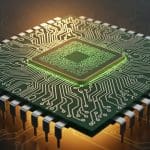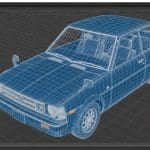Researchers Wang Fang and Mingsheng Ying have developed a symbolic execution framework for quantum programs, known as QSE, which allows for more efficient analysis and debugging of quantum error correction (QEC) programs. The QSE framework introduces symbolic stabilizer states, improving the analysis of QEC programs. The researchers have implemented QSE in a prototype tool named QuantumSEjl, which has demonstrated efficiency in debugging QEC programs with over 1000 qubits. Despite a longer initialization time than Google’s simulator, Stim, QuantumSEjl offers a quicker sampling rate. This research could significantly advance quantum computing and inspire further advancements in symbolic execution.
What is Symbolic Execution in Quantum Error Correction Programs?
Symbolic execution is a technique used in computer science to analyze a program’s behavior without actually executing it. In the context of quantum computing, researchers Wang Fang and Mingsheng Ying from the Institute of Software at the Chinese Academy of Sciences and Tsinghua University have developed a symbolic execution framework for quantum programs, which they refer to as QSE. This framework integrates symbolic variables into quantum states and the outcomes of quantum measurements.
The soundness of QSE is established through a theorem that ensures the correctness of symbolic execution within operational semantics. This means that the framework is mathematically proven to accurately represent the behavior of quantum programs without the need for actual execution. This is a significant advancement in the field of quantum computing, as it allows for more efficient analysis and debugging of quantum error correction (QEC) programs.
QEC programs are crucial for the future of large-scale quantum computing. Quantum hardware, such as IBM’s advanced quantum processor, the IBM Condor, which features 1121 superconducting qubits, often suffer from errors caused by quantum noise and inaccurate quantum gate implementations. QEC programs are designed to correct these errors, and the QSE framework developed by Wang Fang and Mingsheng Ying provides a more efficient way to analyze and debug these programs.
How Does Symbolic Execution Improve Quantum Error Correction?
The QSE framework introduces symbolic stabilizer states, which symbolize the phases of stabilizer generators. These symbolic stabilizer states allow for the efficient analysis of QEC programs. Within the QSE framework, symbolic expressions can be used to characterize the possible discrete Pauli errors in QEC. This is a significant improvement over existing methods that rely on sampling with simulators.
The researchers have implemented QSE with the support of symbolic stabilizer states in a prototype tool named QuantumSEjl. Their experiments on representative QEC codes, including quantum repetition codes, Kitaev’s toric codes, and quantum Tanner codes, demonstrate the efficiency of QuantumSEjl for debugging QEC programs with over 1000 qubits.
In addition to its debugging capabilities, QuantumSEjl also has a sampling feature for stabilizer circuits. By substituting concrete values in symbolic expressions of measurement results, QuantumSEjl can sample the possible outcomes of a quantum program. Despite a longer initialization time than Google’s state-of-the-art stabilizer simulator, Stim, QuantumSEjl offers a quicker sampling rate in the experiments conducted by the researchers.
What is the Significance of this Research?
The research conducted by Wang Fang and Mingsheng Ying is significant for several reasons. Firstly, their QSE framework provides a more efficient way to analyze and debug QEC programs. This is crucial for the future of large-scale quantum computing, as QEC programs are key to correcting the errors that are common in quantum hardware.
Secondly, their prototype tool, QuantumSEjl, demonstrates the practical application of the QSE framework. The tool’s ability to debug QEC programs with over 1000 qubits and its quick sampling rate make it a valuable resource for quantum computing researchers and developers.
Finally, the research contributes to the broader field of computer science by advancing the technique of symbolic execution. By integrating symbolic variables into quantum states and the outcomes of quantum measurements, the researchers have expanded the potential applications of symbolic execution and opened up new possibilities for its use in quantum computing.
What are the Future Implications of this Research?
The research conducted by Wang Fang and Mingsheng Ying has several implications for the future of quantum computing. As quantum hardware continues to develop and the number of physical qubits gradually increases, the need for efficient QEC programs will become even more critical. The QSE framework and the QuantumSEjl tool provide a more efficient way to analyze and debug these programs, which will be crucial for the advancement of large-scale quantum computing.
Furthermore, the researchers’ work on symbolic execution could inspire further advancements in this area. The integration of symbolic variables into quantum states and the outcomes of quantum measurements is a novel approach that could be expanded upon in future research.
Finally, the researchers’ work could have implications for the development of quantum computing hardware. By providing a more efficient way to correct errors in quantum hardware, their research could contribute to the development of more reliable and accurate quantum processors.
How Does this Research Contribute to the Field of Quantum Computing?
The research conducted by Wang Fang and Mingsheng Ying contributes to the field of quantum computing in several ways. Firstly, their QSE framework provides a more efficient way to analyze and debug QEC programs. This is a significant advancement, as QEC programs are crucial for correcting the errors that are common in quantum hardware.
Secondly, their prototype tool, QuantumSEjl, demonstrates the practical application of the QSE framework. The tool’s ability to debug QEC programs with over 1000 qubits and its quick sampling rate make it a valuable resource for quantum computing researchers and developers.
Finally, the researchers’ work contributes to the broader field of computer science by advancing the technique of symbolic execution. By integrating symbolic variables into quantum states and the outcomes of quantum measurements, they have expanded the potential applications of symbolic execution and opened up new possibilities for its use in quantum computing.
What are the Limitations and Future Directions of this Research?
While the research conducted by Wang Fang and Mingsheng Ying represents a significant advancement in the field of quantum computing, there are still limitations to their work. For instance, the QuantumSEjl tool has a longer initialization time than Google’s state-of-the-art stabilizer simulator, Stim. This could be a potential area for improvement in future iterations of the tool.
Furthermore, while the QSE framework provides a more efficient way to analyze and debug QEC programs, it is still a prototype and may require further testing and refinement before it can be widely adopted in the field of quantum computing.
Looking forward, the researchers’ work on symbolic execution could inspire further advancements in this area. The integration of symbolic variables into quantum states and the outcomes of quantum measurements is a novel approach that could be expanded upon in future research. Additionally, their work could have implications for the development of quantum computing hardware, potentially contributing to the development of more reliable and accurate quantum processors.
Publication details: “Symbolic Execution for Quantum Error Correction Programs”
Publication Date: 2024-06-20
Authors: Fang Wang and Mingsheng Ying
Source: Proceedings of the ACM on programming languages
DOI: https://doi.org/10.1145/3656419




